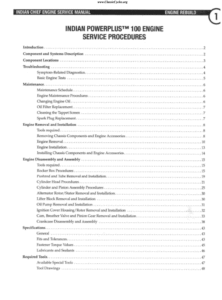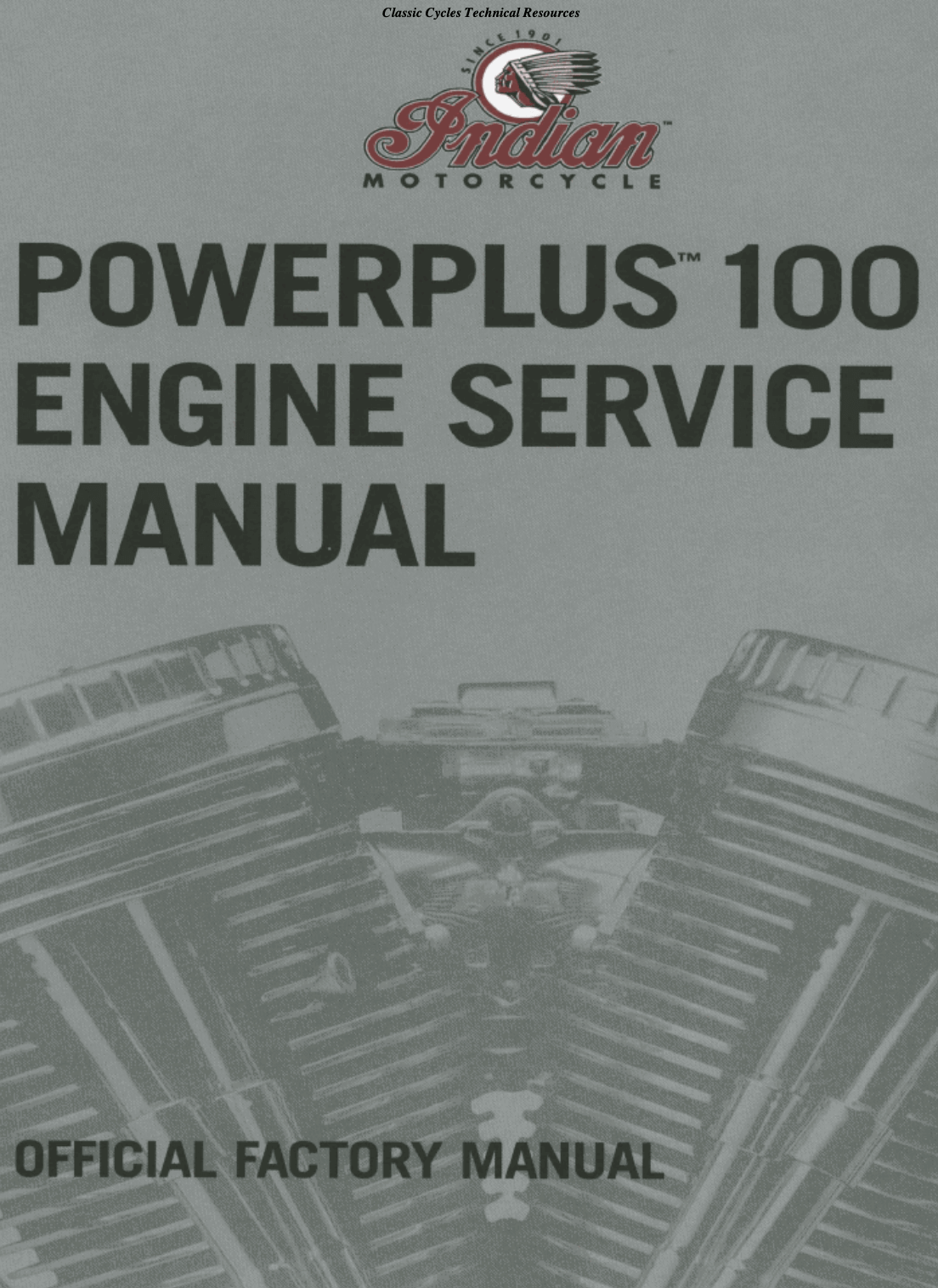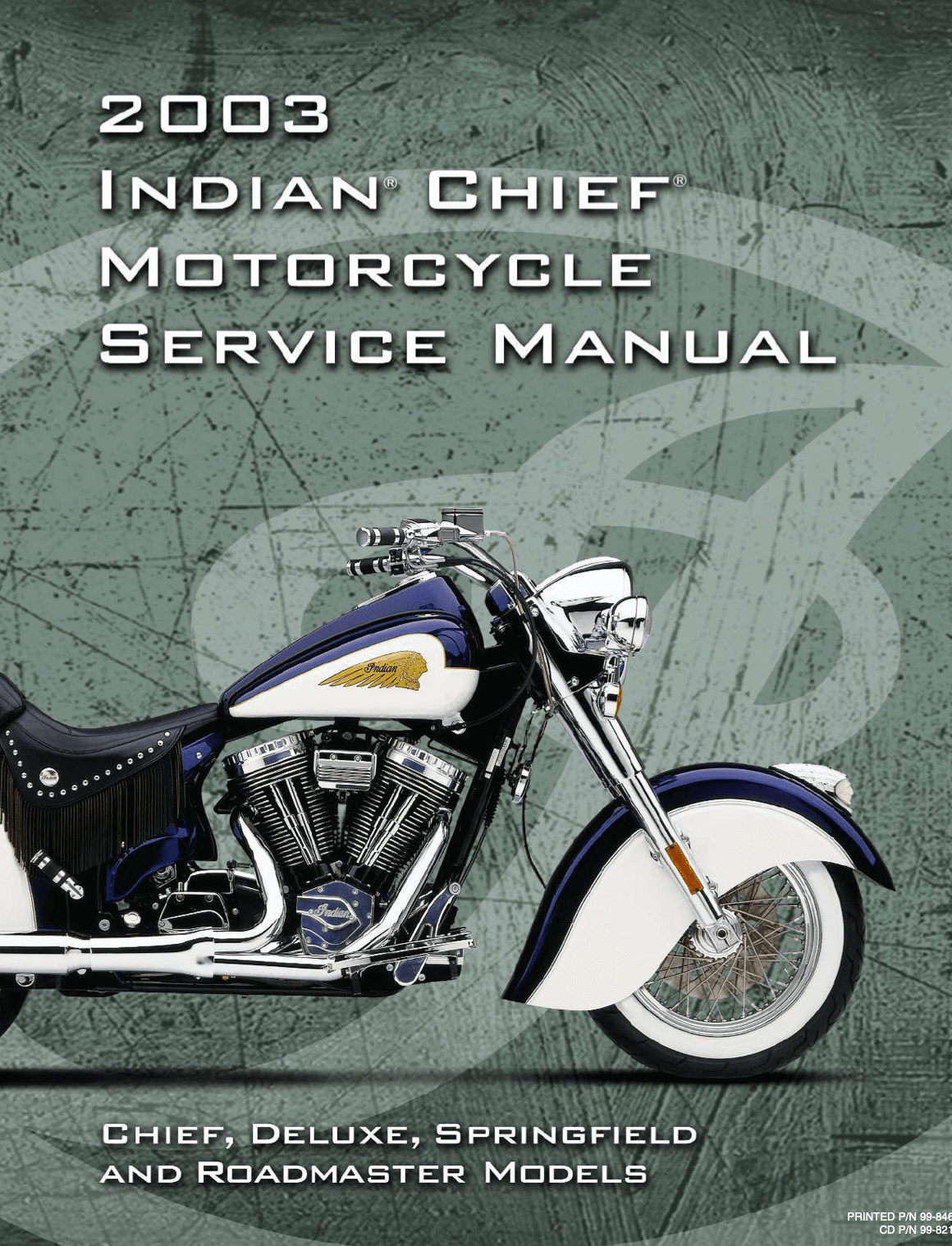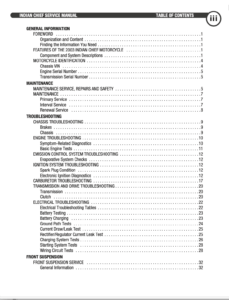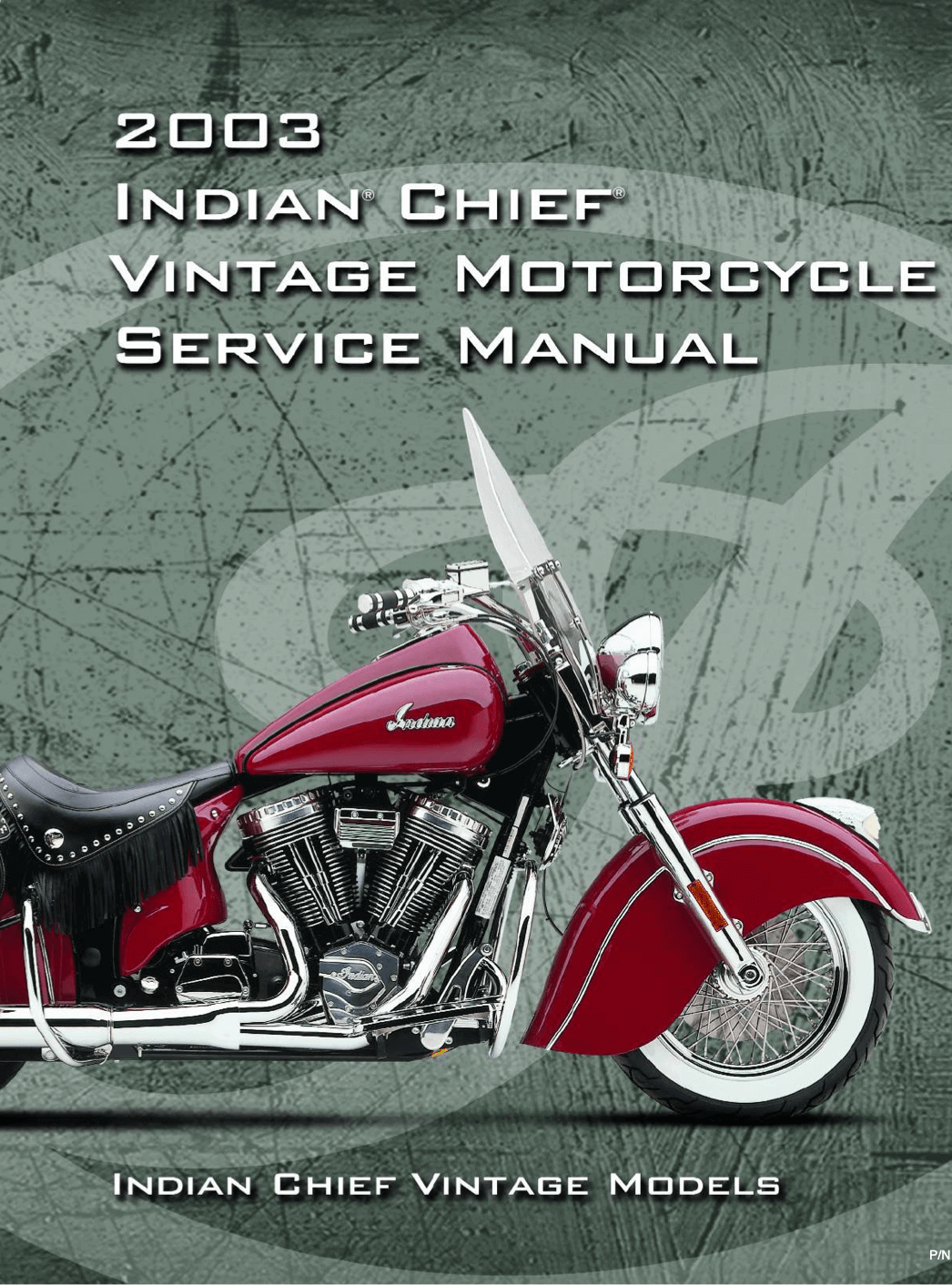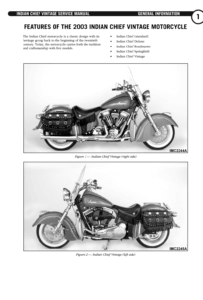Complete PDF version of the Service Manual for the Indian Chief Vintage models. A MUST for every Gilroy Indian Chief owner.
Download: Immediately after payment!
OEM Original factory workshop manual.
Models covered by this manual: 1999 to 2003
Number of pages: 305 pages
Table of contents:

This PDF repair manual can be downloaded right after the payment process in complete, on the device of your choice.
We do not offer printed manuals, for the following reasons:
- it is more eco-friendly to use a digital version
- your manual never gets dirty or greasy
- you can always choose to print the specific page(s) you need to work on your bike
- you receive your manual immediately after payment
- it is searchable

Indian Chief Vintage
The Indian Chief is a motorbike produced by the Hendee Manufacturing Company and its successor, the Indian Motocycle Company, from 1922 until the company’s demise in 1953. The Indian Chief was the company’s “big twin,” a bigger, more powerful motorcycle than the Scout, which was intended for competition and sport riding.
When Indian restarted civilian manufacture after WWII, they only resurrected the Chief line.
Production of Indian motorcycles stopped with the final Chief built in 1953.
Origin
The Chief was released in 1922 to replace the Powerplus, however the Powerplus was nevertheless sold under the name “Standard” until 1923. The Chief, designed by Charles B. Franklin, shared design elements with Franklin’s previous Scout, such as a gearbox connected to the engine casings and main drive by gear train. The Chief, like the Powerplus/Standard, had a bore of 3+18 inches (79 mm) and a stroke of 3+3132 inches (101 mm), with a displacement of 61 cubic inches. The Chief, unlike the Powerplus/Standard, did not have rear suspension.
The Big Chief was first presented in 1923. The Big Chief’s engine was bored to 34 inches (83 mm) and stroked to 4+716 inches (113 mm), resulting in a displacement of 74 cubic inches. The Big Chief was designed primarily for sidecar use, although it was also popular with solo riders. The smaller-engined Chief was phased out in 1928, owing in part to increasing manufacturing of the Model 101 Scout.
Development
The Chief frame was redesigned for 1940 to feature plunger rear suspension. All Indian models were restyled with broad, ornamental fenders the same year.
The Indian 340-B, based on the Chief, was a military motorcycle. The 340-B featured open fenders and was typically delivered with a sidecar. Customers included the United States military, which got around 3,000 units, and France, which received 5,000 units before surrendering to Germany in 1940.
Post-war
The Chief was the only pre-war Indian model produced after World War II. Before the war, the leaf-sprung trailing-link fork was replaced by girder forks identical to those used by the military 841 and the Sport Scout.
In 1949, no Chiefs were produced. The Chief was reintroduced in 1950, with telescopic forks replacing the girder forks and an engine stroked to 80 cu in (1,300 cc). The Chief’s manufacture terminated in 1953, marking the end of Indian motorcycle production.
Later Chiefs
Brockhouse
Brockhouse Engineering, the owner of the Indian trademarks and distribution network, offered a rebadged Royal Enfield Meteor as the Indian Chief in 1959.
1920-2013
From 1999 to 2003, the Indian Motorcycle Company of America (IMCA) produced Indian Chief bikes in Gilroy, California. Initially, they employed clones of Harley-Davidson Evolution engines made from S&S components. Later versions made use of the “Powerplus” engine developed in-house.
In 2006, a new firm in King’s Mountain, North Carolina, began manufacturing Indian Chiefs. The IMCA Chief was upgraded in these versions. After Polaris Industries purchased the firm, production of the Chief was relocated to Spirit Lake, Iowa.
2014-present
Indian introduced a new Indian Chief motorbike with a new engine in 2014. Nothing on the 2014 Chief is based on the previous Chief purchased from King’s Mountain.
Source: Wikipedia
